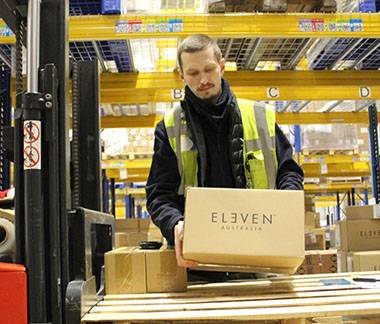The sorting centre: how does it work?
What is a sorting centre?
Definition
A sorting centre is a logistical facility that brings together, sorts and distributes the flows passing through it.
Generally speaking, a sorting centre is a hub where products enter and leave. These products can be of various kinds: parcels, envelopes, advertising material, mail, pallets, etc.
A sorting centre can be partially or fully mechanised, in which case it will be an industrial sorting centre.
What are the specificities of a sorting centre?
The activity of a sorting centre is continuous
Trucks regularly drive to logistics sorting centres to bring in products. The goods are then unloaded manually, or by means of handling equipment such as pallet trucks or forklift trucks, or with the help of more sophisticated industrial tools such as telescopic handlers, also known as crates or injection arms for loading and unloading bulk products.
The service provider in charge of sorting the goods then checks the objects to ensure that they are correct in terms of quality, quantity, identity of the sender, weight, respect of the goods, etc. They are then sorted manually or mechanically on industrial sorting machines. Finally, the sorted flows are loaded onto trucks to be transported to their new destination.
Cross-docking activity
A sorting centre can also have a dedicated cross-docking activity. This consists of transiting within the platform the flows of goods that do not need to be stored, sorted and prepared before their future shipment. Indeed, after being unloaded on the quays, identified and grouped according to their destination, the containers are immediately directed towards the loading quay to be loaded in the trucks ready to leave.
Manual and mechanised sorting, complementary techniques
Over the years, sorting centres have undergone major mechanisation developments aimed at improving the speed and quality of sorting, by reducing manual intervention. This also reduces the risk of accidents, but manual sorting remains essential, particularly for sorting flows whose labels cannot be read by the machine or for sorting non-standard flows (bulky, unstable, etc.).
In the field of logistics, the types of machines are evolving at a very high speed according to the growing flows in the markets. Their technicality is also progressing day by day in order to have machines with multi-flow and multi-criteria sorting capacity, in this frantic race for ever faster delivery.
The presence of a maintenance team ensures the proper functioning and availability of the logistics machines in order to control machine downtime and avoid breakdowns, to optimise production and to control equipment costs.
What jobs can be done in a sorting centre?
There are a multitude of jobs in sorting centres, regardless of the products handled by the logistics sorting service provider.
> The operations manager
The job of operations manager or production manager organises, plans and controls production. He/she contributes to the improvement of sorting processes in order to optimise productivity and overall performance. He/she guarantees that the activity complies with the customer's request; he/she is the interface between customers, suppliers and operating teams. He/she ensures that deadlines, quality of service, team management and training objectives are met.
> The sorting agent
The sorting agent's job allows him/her to carry out unloading, distribution and loading operations, by applying the procedures in force and the sorting instructions.
> The forklift operator
The job of a forklift operator consists of unloading trucks, weighing the products and then ensuring their transport to the sorting or storage area.
To do this, the forklift operator uses motorised forklifts. To carry out this type of manoeuvre, it is necessary to have a dedicated licence and to respect all the safety instructions.
> The maintenance technician
The maintenance technician's job is to control, monitor and maintain industrial sorting equipment in a logistics environment on a regular basis. They carry out curative or preventive maintenance tasks and also have an advisory role to optimise the safety and performance of the equipment.
Finding work and developing in this dynamic sector is possible anywhere in France. It is highly seasonal with peaks in activity, sometimes requiring the reinforcement of teams and thus offering professional opportunities.
For example, in parcel sorting, Black Friday, Christmas and the sales period represent what is commonly referred to as the peak period. A trend that is repeated for sorting services for summer and winter products (sun cream, drinks, etc.) or goods related to current events (masks, gels, etc.).
To find out more about the professions or to take up new professional challenges, go directly to the Career site.
Space in sorting centres
A sorting centre is laid out according to the activity it is ready to receive and the organisation of the production. The spaces it contains can be as follows:
- A security post
- A goods receiving area with arrival docks
- Storage areas
- Dedicated work sites such as manual sorting, re-sticking, packaging, picking, quality control, etc.
- Departure platforms
- Supervision areas
- A maintenance spare parts workshop
At Viaposte, sorting meets lean management standards
In a sorting centre, everything is designed to ensure safety and to guarantee the conformity of the sorting service.
For example, the signage, which is very present in sorting centres, is designed to optimise procedures and make it easier for the men and women in the field to find their way around. Similarly, the standards at the workstation allow for rapid training of agents and for the workstation in the same way for all agents. The zoning of the areas aims to secure the work site and optimise movements.
At Viaposte, the implementation of operational excellence (lean management) is truly anchored in the company's culture. The creation of a dedicated programme, called APOLLO, is proof of this.







